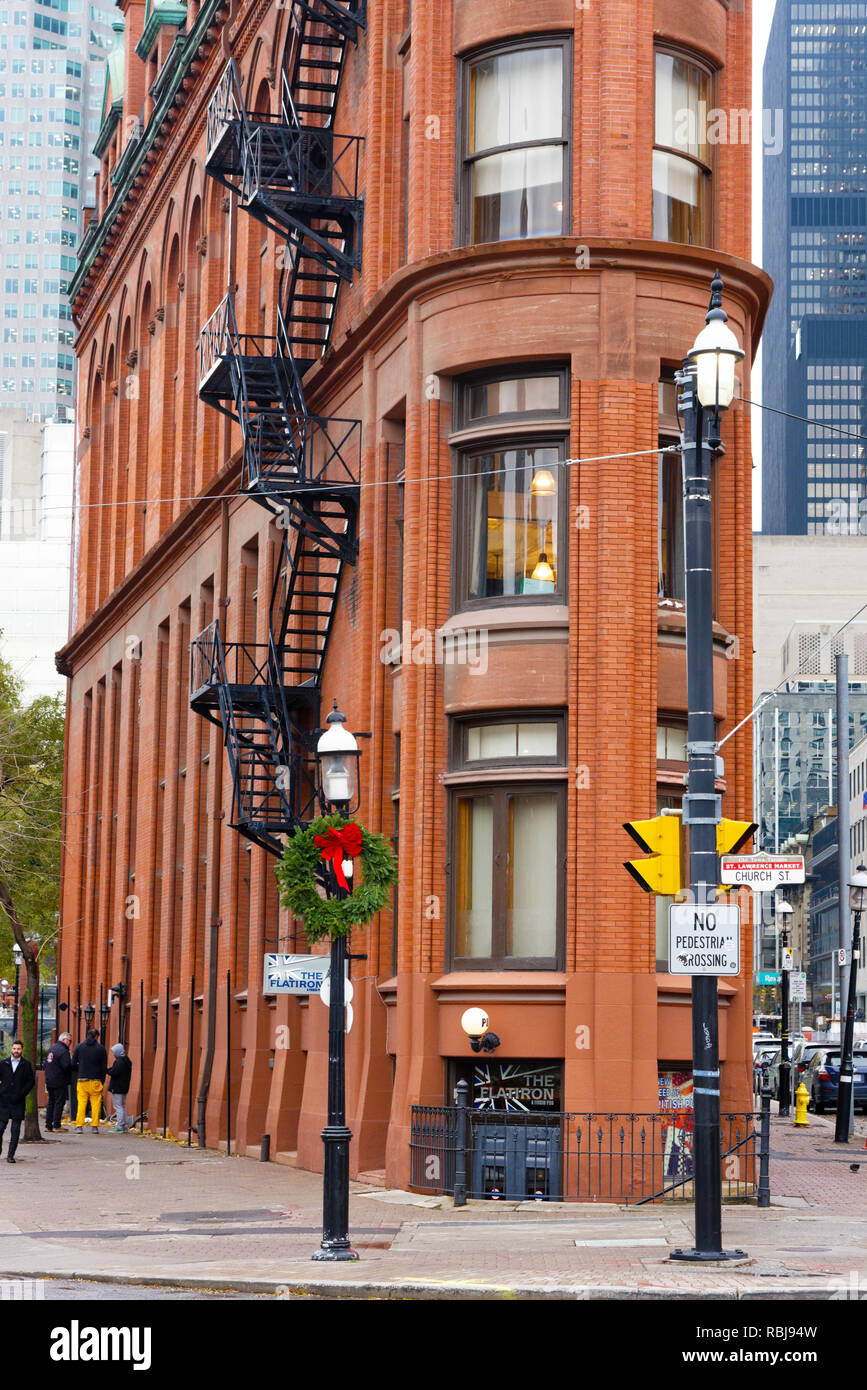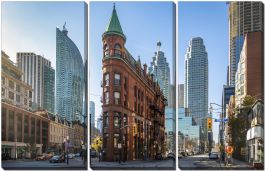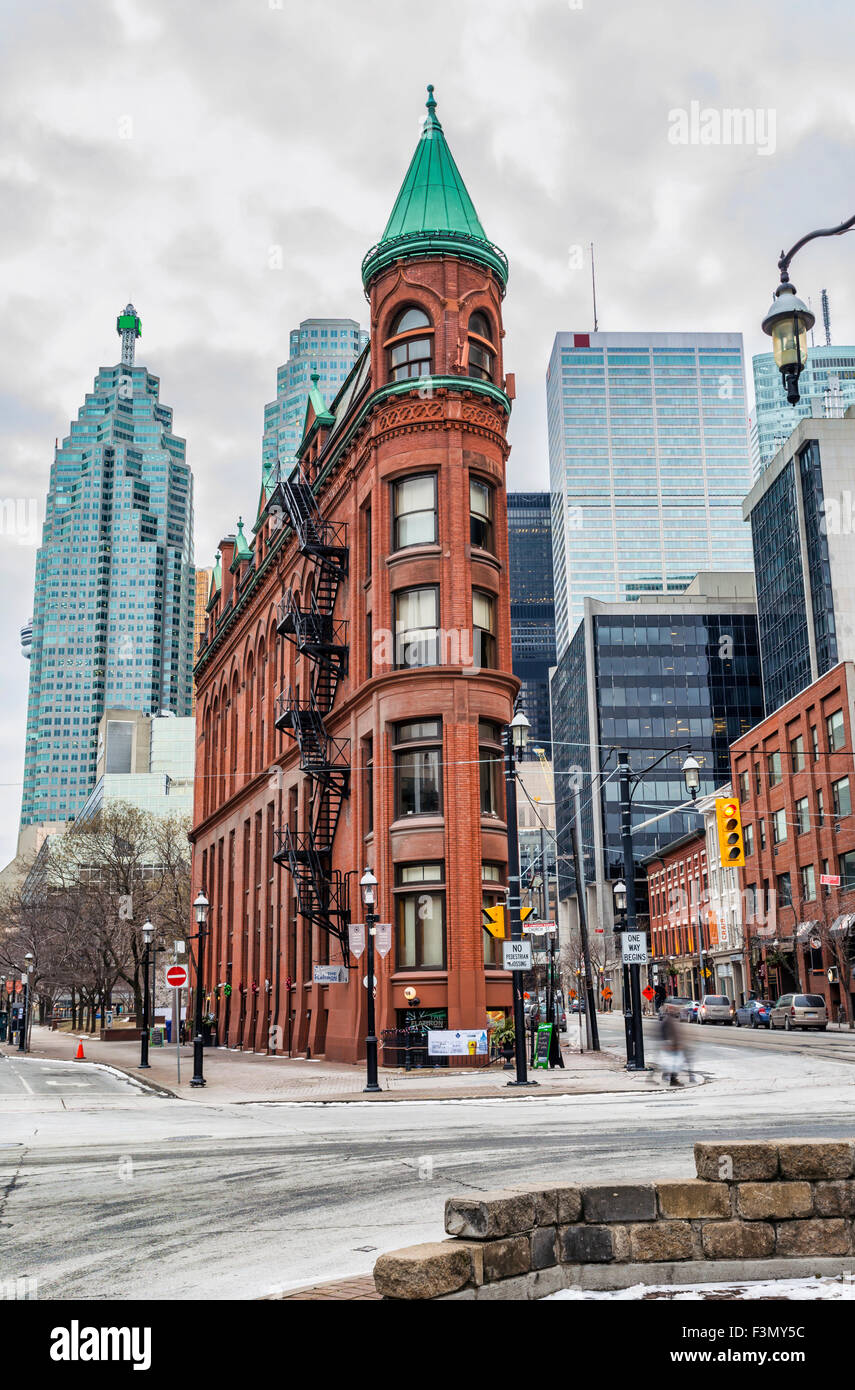Iconic Gooderham Building: Discover Its Landmark Status in Ontario with Accessible Parking and Activities.
Iconic Gooderham Building: Discover Its Landmark Status in Ontario with Accessible Parking and Activities.
Blog Article
Discover the Rich Background Behind the Gooderham Structure in Toronto
The Gooderham Structure, an excellent symptom of Richardsonian Romanesque style in Toronto, has a fabled past that expands beyond its striking red brick frontage. Appointed by the influential Gooderham and Worts distillery in 1891, this structure has actually played a crucial role in forming the urban landscape of the St. Lawrence Market location.

Origins of the Gooderham Structure
Building a lasting tradition, the Gooderham Structure, likewise referred to as the Flatiron Structure, became an icon of Toronto's building advancement in the late 19th century. The structure's beginnings trace back to 1891 when it was commissioned by the Gooderham and Worts distillery, one of copyright's biggest distilling firms. Developed by designer David Roberts Jr. Gooderham Building address., the framework was distinctly positioned at the crossway of Front and Wellington Streets, making use of a triangular great deal developed by the merging of these highways
The structure's building made use of neighborhood red block and terracotta, developing an unique aesthetic that complemented the blossoming cityscape. Originally meant to house the Gooderham and Worts offices, the building stood for the success of the distillery, which had actually ended up being a substantial contributor to Toronto's economy. Notably, the conclusion of the Gooderham Structure accompanied a period of rapid urbanization that characterized the age.
The establishment of this building gem not only showcased innovative layout however also laid the groundwork for future developments in Toronto. Today, it stands as a testament to the city's rich history and versatility, remaining to attract site visitors and admirers from around the world.
Architectural Importance
The architectural importance of the Gooderham Building extends beyond its distinctive flatiron form, mirroring the cutting-edge spirit of late 19th-century design. Finished in 1892, the framework exhibits the Richardsonian Romanesque style, defined by its durable masonry, rounded arcs, and detailed outlining. The bold use of contrasting materials, specifically the warm red brick and sedimentary rock accents, enhances its visual allure and demonstrates the workmanship of the period.
The structure's three-story style is noteworthy for its harmonious percentages and stylish cornice, which add to its legendary silhouette versus the Toronto sky line. The slim lot on which it stands presented distinct challenges, yet the architects, in this instance, created a structure that maximized the readily available area while keeping visual balance.
Furthermore, the Gooderham Structure is a testament to the flexibility of building design in metropolitan environments. Its long-lasting visibility among contemporary growths illustrates the worth of preserving historical style as a method of recognizing a city's past. Today, it remains a precious site, mirroring both the architectural trends of its time and the advancing story of Toronto as a vivid city facility.
Function in Toronto's Growth
Becoming a principal in Toronto's metropolitan landscape, the Gooderham Building added significantly to the city's advancement throughout the late 19th century. Constructed in 1892, this renowned habitation stood for not only the building aspirations of the time yet also the growing economic landscape of Toronto. The building was at first created to function as a storage facility for the Gooderham and Worts distillery, which was among the biggest distilleries in the British Realm. Its calculated area at the intersection of Front and Wellington Streets promoted the motion of items and services, emphasizing the location's value in the city's business tasks.
As the city expanded, the Gooderham Building came to be an essential element of the St. Lawrence Market area, which was a center of trade and commerce. Its special architectural design and prominent existence attracted attention, influencing the layout of succeeding buildings in the vicinity. The structure's survival through different financial shifts and city advancements shows the durability and flexibility of Toronto's historical landscape. Fundamentally, the Gooderham Structure is not simply a building site; it played a pivotal function fit Toronto's identity and economic development throughout a transformative duration in its background.
Cultural Impact and Legacy
Gooderham Building's distinctive building design and historical significance have left an enduring mark on Toronto's cultural landscape. As one of the city's most identifiable sites, its unique flatiron form and elaborate brickwork exemplify the Victorian architectural trends of the late 19th century. This framework not only acts as an aesthetic anchor in the St. Lawrence neighborhood yet also personifies the spirit of a burgeoning city during an era of economic development.
The building has actually ended up being an icon of Toronto's abundant background, inspiring regional artists and photographers that look for to catch its beauty. Its existence has actually promoted a feeling of neighborhood identification, contributing to the story of city advancement. Moreover, the Gooderham Structure has actually played a crucial duty in the tourist sector, drawing in visitors anxious to explore its fabled past and building charm.
In enhancement to its aesthetic charm, the structure encapsulates go to this web-site a story of strength and adjustment, as it has transitioned with various uses over the years - Gooderham Building address. Hence, the Gooderham Structure stands not only as a monolith of building relevance however likewise as a testimony to the developing social heritage of Toronto

Remediation and Conservation Initiatives
Various reconstruction and conservation initiatives have actually been undertaken to guarantee the Gooderham Building stays an important part of Toronto's architectural heritage. Originally finished in 1892, the building has undertaken considerable renovations to address structural issues while retaining its historical integrity. One of the most significant reconstruction happened in the late 20th century when the structure was meticulously reconditioned to meet modern-day safety criteria without endangering its original design aspects.
These efforts included repairing the unique red-brick façade, recovering the famous triangular shape, and protecting the elaborate masonry details. Additionally, the building's interior has actually seen cautious updates that appreciate its historical significance, making sure that initial features such as wood beam of lights and attractive moldings are preserved.
The Gooderham Structure is currently secured as a designated heritage residential property under the Ontario Heritage Act, which assists guard it from unacceptable alterations. Community interaction has played a critical function in these preservation initiatives, with neighborhood advocacy groups increasing recognition about the building's historical value. Therefore, the Gooderham Building stands not only as a practical area yet also as a testament to Toronto's abundant building background and sustaining social heritage.
Final Thought

Please visit one of our local supporters - Gamerama And The Repair Store - Toronto Iphone Repair Shop
Report this page